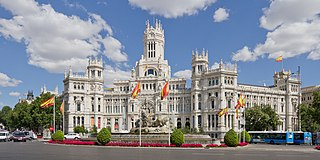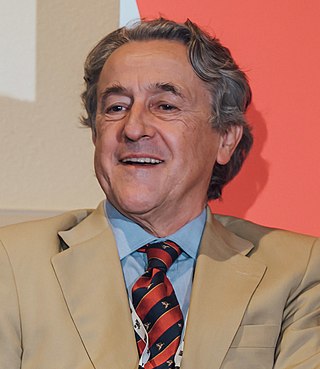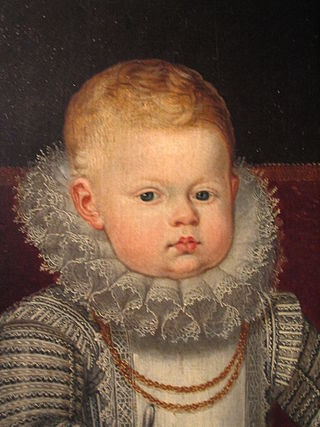
Guadalajara is a city and municipality in Spain, located in the autonomous community of Castilla–La Mancha. It is the capital of the Province of Guadalajara.

Infanta Cristina is the younger daughter of King Juan Carlos I and his wife, Queen Sofía. She is sixth in the line of succession to the Spanish throne, after her brother King Felipe VI's children, her sister Infanta Elena, Duchess of Lugo, and Elena's children.

Juan de Herrera was a Spanish architect, mathematician and geometrician.

Juan Agustín Ceán Bermúdez was a Spanish writer on art.

National Democracy is a far-right political party in Spain, founded in 1995. It is modelled on the National Rally (RN) of France, and grew indirectly out of several defunct parties like the Spanish Circle of Friends of Europe (CEDADE) group and Juntas Españolas. Until 2018, its leader was Manuel Canduela Serrano, a former member of Acción Radical, a group active in the Valencian Community. He was also a vocalist in the so-called "identity" rock group Division 250. The party's current leader is Pedro Chaparro.
Olivares is a city located in the Province of Seville, Spain. According to the 2016 census (INE), the city has a population of 9480 inhabitants. It is located in the Aljarafe, the comarca downstream of the Guadalquivir and west of Seville. It borders Albaida to the west, Gerena to the north, Salteras to the east, and Sanlúcar la Mayor and Villanueva del Ariscal to the south. After the establishment of the House of Olivares, it grew in size and influence, becoming an important urban center in the Aljarafe.
Francisco de Borja del Paso y Troncoso was an important Mexican historian, archivist, and Nahuatl language scholar. He "was and remains the outstanding major Mexican investigator of his era, a fully accepted figure in the international group of his peers."
Julio Mario Luqui-Lagleyze is an Argentine historian. Born in Buenos Aires in 1959 received a degree in History in 1982. He specializes in Hispano-American Military and Naval History and Military Museology. He is currently studying for his PhD in History at the Universidad Católica Argentina.

Augusto Ferrer-Dalmau Nieto is a Spanish hyperrealist painter who specialises in historical military paintings that portray different eras of the Spanish Armed Forces through hyperrealistic naturalism. On January 11, 2022, he presented the Ferrer-Dalmau Foundation with the aim of promoting defense culture through history and art.

Madrid is the capital and most populous city of Spain. The city has almost 3.4 million inhabitants and a metropolitan area population of approximately 7 million. It is the second-largest city in the European Union (EU), and its monocentric metropolitan area is the second-largest in the EU. The municipality covers 604.3 km2 (233.3 sq mi) geographical area. Madrid lies on the River Manzanares in the central part of the Iberian Peninsula at about 650 meters above mean sea level. The capital city of both Spain and the surrounding autonomous community of Madrid, it is also the political, economic, and cultural centre of the country. The climate of Madrid features hot summers and cool winters.

Jean Laurent or, in Spanish, Juan Laurent Minier; sometimes simply J. Laurent was a French photographer who mostly worked in Spain.

The City Council of Madrid is the top-tier administrative and governing body of the Madrid, the capital and biggest city of Spain.

Ana Santos Aramburo is a Spanish librarian who has been the director of the National Library of Spain since February 2013.
The following is a timeline of the history of the city of Las Palmas, Canary Islands, Spain.

Hermann Leopold Tertsch del Valle-Lersundi is a Spanish journalist, lawyer and politician. He has been a member of the European Parliament for the Vox party since 2019, integrated within the European Conservatives and Reformists (ECR).
Jesús Palacios Tapias is a Spanish essayist who has authored several books about contemporary history of Spain. He was a member of the neo-nazi CEDADE, now disbanded.

Margarita of Spain was an infanta of Spain, who died in childhood.

Alonso of Spain was an infante of Spain, who died in childhood.













